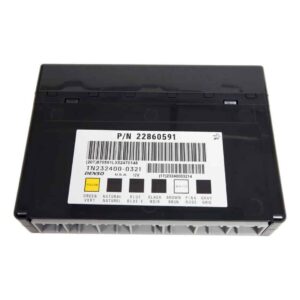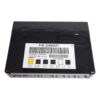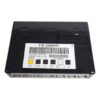Restore Your Tahoe’s Electrical System with a Plug-and-Play BCM
Is your 2010 Tahoe or GM vehicle acting possessed? Flickering lights, malfunctioning power windows, a security system that won’t cooperate, or even a frustrating no-start condition can all point to one central culprit: a failing Body Control Module (BCM). As the nerve center for your vehicle’s electronics, when the BCM goes down, it can create a cascade of confusing and unpredictable problems. This isn’t just an annoyance; it’s a matter of reliability and safety. Stop chasing electrical gremlins and get a definitive solution with our professionally prepared BCM.
Case Study: A Tricky Diagnosis
A customer brought in a 2010 Tahoe with a classic headache of a problem. The dome lights would randomly stay on, the radio would shut off, and occasionally, the truck wouldn’t start, showing only a ‘Service Theft Deterrent System’ message. They had already replaced the battery and checked the alternator. In my shop, I’ve seen this exact pattern hundreds of times. After ruling out wiring issues, we traced it to an internal BCM failure. The module was sending erratic signals, causing communication breakdowns across the vehicle’s network. Installing a VIN-programmed BCM like this one resolved all issues instantly, saving the customer from endless diagnostic fees and the high cost of dealership programming.
Is Your Vehicle Showing These Symptoms?
- ✔ Power windows, door locks, or mirrors working intermittently or not at all.
- ✔ Interior or exterior lights flickering, staying on, or not turning on.
- ✔ The security or anti-theft system light is illuminated, preventing the engine from starting.
- ✔ The horn sounding unexpectedly or not working when pressed.
- ✔ Common diagnostic trouble codes (DTCs) stored, such as U0140 (Lost Communication With Body Control Module) or other U-series codes.
- ✔ Inconsistent operation of the heating and A/C blower motor.
The Simple, Reliable Solution: VIN Programming
The biggest hurdle in replacing a BCM has always been the expensive and time-consuming programming required at a dealership. We eliminate that step entirely. Using our professional Cloning Service, we flash this module with the latest GM software updates, tailored specifically to your vehicle using the VIN you provide after purchase. This ensures that all your vehicle’s specific options and security information are correctly loaded, making installation a straightforward, plug-and-play process. You get a fully functional module that’s ready to install right out of the box.
A Straightforward Guide to Installation
- ✔ Safety First: Always disconnect the negative terminal from your vehicle’s battery before beginning any electrical work.
- ✔ Locate the BCM: On a 2010 Tahoe, the BCM is typically found under the driver’s side of the dashboard, near the steering column. Consult a service manual for the exact location on your specific model.
- ✔ Disconnect and Remove: Carefully unplug the electrical connectors from the old BCM. They have locking tabs that must be depressed. Once disconnected, unbolt or unclip the module from its mounting bracket and remove it from the vehicle.
- ✔ Install the New Module: Mount your new, pre-programmed BCM in the same location. Securely reconnect all electrical connectors, ensuring each one clicks into place.
- ✔ Reconnect Power: Reattach the negative battery terminal.
- ✔ Perform Post-Install Checks: Start the vehicle and test all related functions—power windows, locks, lights, radio, etc. Note the post-installation procedures below, as some may be required.
Important Post-Installation Procedures
While our programming handles the heavy lifting, some GM vehicles require a final handshake between modules after installation. Be aware of the following potential steps:
- Airbag System Sync: If the airbag warning light is on after installation, a professional scan tool is needed to perform the ‘Setup SDM Primary Key in BCM’ procedure. This syncs the new BCM with the airbag system. This is only necessary if the light appears.
- Brake Pedal Position Relearn: On some models, a brake pedal position sensor recalibration may be needed to ensure correct brake light and traction control operation.
Disclaimer: Specific procedures can vary by vehicle. Always consult a factory service manual or a qualified technician for guidance.
Verified Vehicle Compatibility
This module is a direct replacement for a wide range of GM vehicles and part numbers. Please verify your part number is on this list or that your vehicle is listed below. The part number is printed on the label of your original BCM.
Interchangeable Part Numbers: 10382479, 15093910, 15276271, 15299986, 15819552, 15828601, 15837419, 15872388, 15872421, 15880684, 15921352, 15921353, 15948438, 15948439, 20815898, 20839063, 20864767, 20864768, 20921435, 20921436, 20935349, 22860591, 25826124, 25826125, 25847588, 25847589, 25892622, 25910474, 25934762, 25934763, 95151084
Frequently Asked Questions
Frequently Asked Questions
How do I provide my VIN number?
After completing your purchase, please send us a message with your 17-digit Vehicle Identification Number (VIN). We cannot program and ship the module without it.
Is this part difficult to install for a DIYer?
For most models, the BCM is accessible under the dash and requires basic hand tools to replace. The main benefit of our service is that the complex programming is already done, making the physical swap much simpler.
What is your policy on the old BCM (the core)?
We do not require your old part back. Our cloning service uses your VIN to program the replacement, so you can keep your original module. It will be returned to you with the newly programmed unit.
Will this fix my ‘Service Theft Deterrent System’ message?
In many cases, a faulty BCM is the root cause of this message and a no-start condition. Our VIN-programmed module correctly restores the security data, which typically resolves this issue.
What if an airbag light comes on after installation?
This is uncommon, but if it happens, it means the BCM needs to be electronically introduced to the airbag module (SDM). This requires a ‘Setup SDM Primary Key’ procedure with a bidirectional scan tool, which a professional mechanic can perform.



